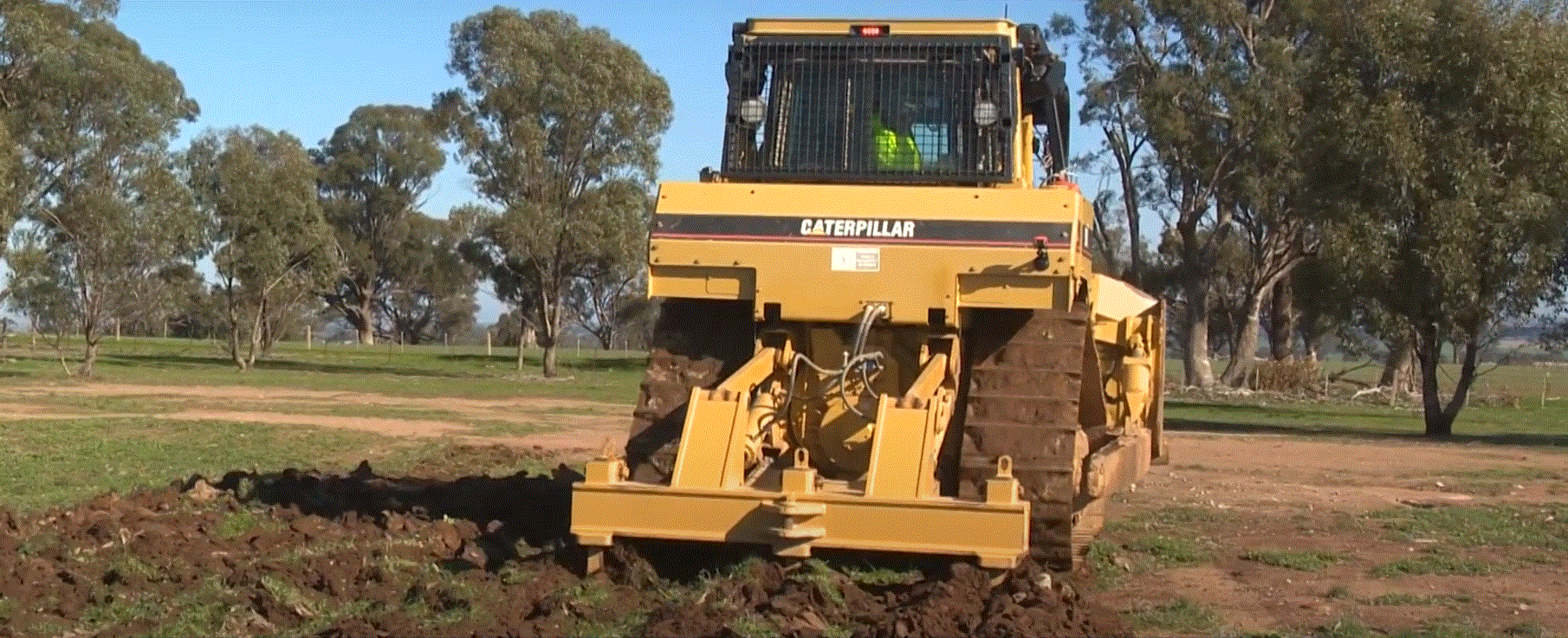Warren destruction (commonly known as ripping) is used after the initial knockdown of feral rabbits has been achieved through baiting, to ensure any remaining rabbits don’t have a place to shelter or breed successfully. A rabbit control program will fail unless all burrows and other harbour are destroyed.
VRAN recommend that you should invest maximum resources into the first year of your rabbit control program and aim to rip all warrens in the landscape in the first season.
This will help to reduce re-invasion and protect your investment. Overall, this approach will save time, money and effort in the long term.
Before you begin your ripping program here are some key points to consider:
- Talk with the relevant approval authorities to seek advice on Cultural Heritage and Native Vegetation.
- Locate, map and mark all warrens.
- Employ a spotter to direct the machine to each warren and ensure all warrens are completely destroyed.
- Mechanical equipment including bulldozers, excavators, backhoes, and tractor-mounted rippers are highly efficient methods to destroy warren systems. Generally, the bigger machines the better the job.
- A tyned ripper mounted on a bulldozer, or an appropriate tractor, is commonly used to rip burrows in open areas.
- Where minimal disturbance is important, excavators, traxcavators, and backhoes are more appropriate. They can be used successfully on rocky sites, along fence-lines, and where removal of woody weeds is necessary. They can also be successfully used to minimise disturbance to areas of native vegetation where warrens are interspersed with remnant vegetation.
Note, digging warrens out with a shovel, mattock or pick is labour intensive and not as effective compared to mechanical ripping.
When conducting your ripping program:
- You must rip at least four metres out from the outermost warren opening.
- Rip lines should be no more than 50cm apart.
- Interline ripping between the rip lines after the first pass, will help destroy the warren structure.
- You must cross rip by ripping in one direction and then to rip again at an angle of 90 degrees to the original ripping.
- Rip to a depth of at least 70cm or deeper if possible. The deeper the ripping the better the result.
- Ripped warrens should be back bladed and track rolled to leave a flat and compacted site, decreasing its attractiveness to re-invading rabbits. Track rolling will also help compact the soil surface and reduce the risk of erosion.
What Next?
Following the program, the site should be revegetated with appropriate vegetation as soon as possible.
VRAN Video
We have another handy video from our VRAN mentors, Tim Bloomfield and Brad Spear to talk about the equipment used, where to use it and what you need to know before you start a ripping program.
For more information about best practice rabbit management please visit www.vran.com.au or https://agriculture.vic.gov.au/biosecurity/pest-animals/invasive-animal-management/integrated-rabbit-control


